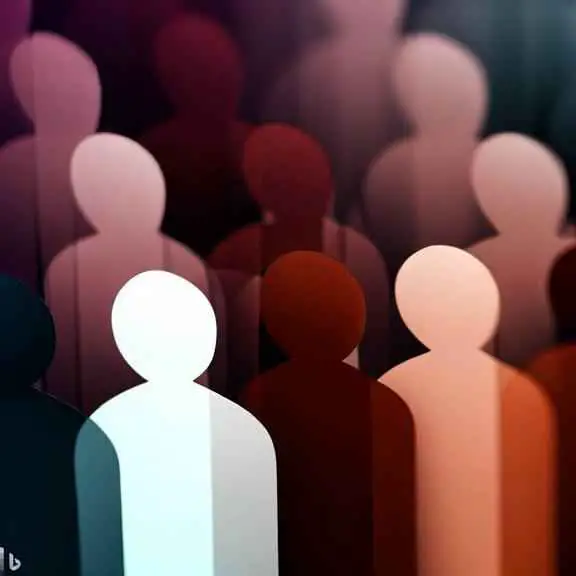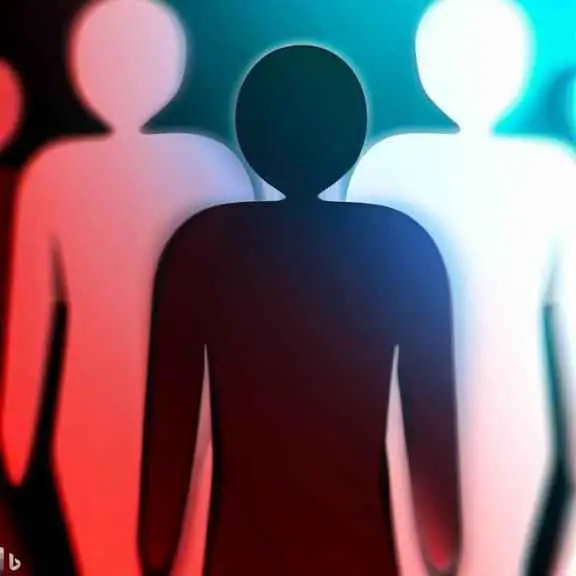Paragraph on
Race Discrimination
for all Class, Words
by Society on
Race discrimination is a pervasive issue that has affected many individuals in different parts of the world. It arises when individuals or…, please continue reading.

Table of Content
Ad
The Paragraph on Race Discrimination
Ad
Race discrimination is a pervasive issue that has affected many individuals in different parts of the world. It arises when individuals or institutions discriminate against others based on their race or ethnicity. This discrimination can take many forms, such as unfair treatment, unequal opportunities, or even violence. The repercussions of race discrimination can be long-lasting and negatively impact the social, economic, and personal lives of the affected individuals.
One of the most common forms of race discrimination is employment discrimination. This happens when employers refuse to hire, promote or give equal pay to individuals based on their race. In some cases, employees suffer from mistreatment, harassment, or retaliation because of their race. Studies have shown that people of color, particularly those who are black or African American, are more likely to suffer from employment discrimination.
Another form of race discrimination is racial profiling, which is the practice of police officers or other authorities targeting individuals of a certain race or ethnicity. This can happen even when these individuals are not doing anything wrong, and it can result in harassment, false accusations, or even violence. Racial profiling has been identified as a major cause of tension between law enforcement officers and communities of color.
To combat race discrimination, laws have been put in place, such as the Civil Rights Act of 1964, which prohibits discrimination based on race, color, religion, sex, or national origin. However, despite these measures, race discrimination remains a stubborn challenge that continues to affect many people鈥檚 lives negatively.

Questions about Race Discrimination
Ad
Questions and Answers:
- What is race discrimination?
Answer: Race discrimination is when individuals or institutions discriminate against others based on their race or ethnicity.
- What are the different forms of race discrimination?
Answer: The different forms of race discrimination include unfair treatment, unequal opportunities, or even violence.
- How does race discrimination affect individuals’ lives?
Answer: The repercussions of race discrimination can be long-lasting and negatively impact the social, economic, and personal lives of the affected individuals.
- What is employment discrimination?
Answer: Employment discrimination is when employers refuse to hire, promote or give equal pay to individuals based on their race.
- Who is more likely to suffer from employment discrimination?
Answer: Studies have shown that people of color, particularly those who are black or African American, are more likely to suffer from employment discrimination.
- What is racial profiling?
Answer: Racial profiling is the practice of police officers or other authorities targeting individuals of a certain race or ethnicity.
- What are the consequences of racial profiling?
Answer: Racial profiling can result in harassment, false accusations, or even violence.
- What laws have been put in place to combat race discrimination?
Answer: The Civil Rights Act of 1964 prohibits discrimination based on race, color, religion, sex, or national origin.
- Can race discrimination still happen despite laws prohibiting it?
Answer: Yes, race discrimination can still happen despite laws prohibiting it.
- Why is combating race discrimination important?
Answer: Combating race discrimination is essential to promoting fairness, equality, and social justice.

Vocabulary related to Race Discrimination
Ad
Vocabulary Words:
- Pervasive - (adjective) widespread, prevalent
Usage: The issue of race discrimination is pervasive and requires urgent solutions.
- Repercussions - (noun) consequences, effects
Usage: The repercussions of race discrimination can be devastating and long-lasting.
- Tension - (noun) strain, stress
Usage: Racial profiling has caused tension between authorities and communities of color.
- Harassment - (noun) intimidation, persecution
Usage: Race discrimination can take many forms, including harassment and mistreatment.
- Retaliation - (noun) revenge, retribution
Usage: Some employees suffer retaliation from their employers after speaking out against race discrimination.
- Prohibit - (verb) ban, forbid
Usage: Laws have been put in place to prohibit race discrimination in different sectors.
- Equality - (noun) fairness, sameness
Usage: Equality should be promoted in all areas of life, including education and employment.
- Social Justice - (noun) fairness, righteousness
Usage: Achieving social justice requires addressing issues such as race discrimination.
- Ethnicity - (noun) cultural background, ancestry
Usage: Race discrimination is based on a person’s ethnicity or race.
- Inequality - (noun) unfairness, disparity
Usage: Race discrimination perpetuates inequality and marginalization of certain groups.
- National origin - (noun) country of birth, heritage
Usage: Laws prohibit discrimination based on national origin.
- Stereotyping - (noun) generalization, profile
Usage: Racial profiling is a type of stereotyping that can lead to discrimination.
- Minorities - (noun) underrepresented groups, disadvantaged groups
Usage: Minority groups are more likely to suffer from race discrimination.
- Prejudice - (noun) bias, discrimination
Usage: Some individuals hold prejudices against people of different races.
- Marginalization - (noun) exclusion, rejection
Usage: Race discrimination can lead to the marginalization of certain groups in society.

Structure of the sample "Race Discrimination" paragraph
Ad
Cohesion and Coherence:
The paragraph starts by defining race discrimination and explaining the different forms it can take. It then goes on to explore employment discrimination and racial profiling in more detail, highlighting the different ways in which individuals can suffer from race discrimination. The paragraph concludes by emphasizing the importance of laws in combating race discrimination and acknowledging that despite these measures, it remains a stubborn challenge. The paragraph is coherent because it follows a clear structure, with each sentence building on the previous one to develop the topic. The use of transition words and phrases, such as “however” and “to combat race discrimination,” also helps to build cohesion and link the different ideas together.
